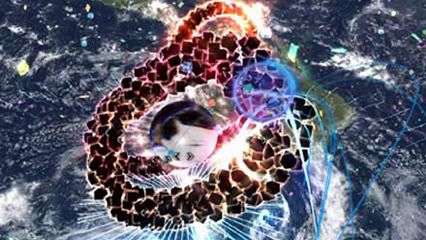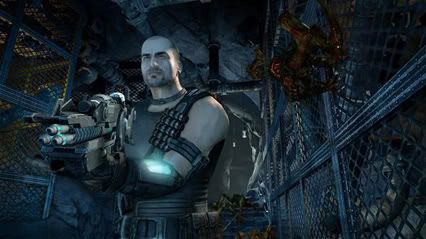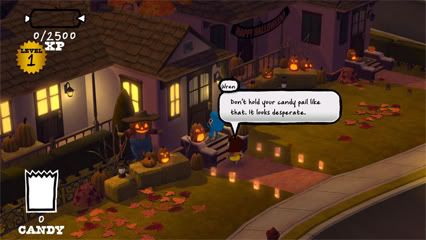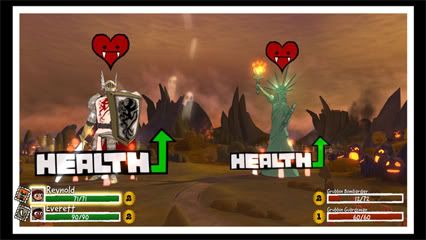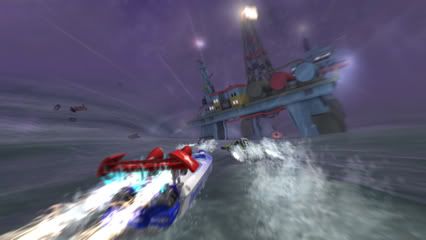
- Format: 360 (version reviewed), PS3
- Unleashed: Out Now (on 360)
- Publisher: Ubisoft
- Developer: Q Entertainment
- Players: 1
- Site: http://child-of-eden.uk.ubi.com/
Much has been made of Child of Eden’s price-to-playthrough time, with the basic argument being, “why should I pay $49.99 for a 90-minute game.” Even without being that reductive, many reviewers have said there simply isn’t enough content. Having played over a half-dozen hours of the game so far, we’re raring for more, and wondering what everyone is whining about.
The Child of Eden experience isn’t comparable to most modern games. It’s actually closer to listening to a new album by your favorite band. The first listen is foreign and new. You can never quite process what you’re listening to on the first play. If the album is good, each subsequent listen only gets better. Layers of sound are revealed, and knowing your favorite moments only makes the journey to them all the more exciting.
There’s one moment near the end of the second level in Child of Eden entitled, “Evolution”. You’re presented with a whale covered in barnacles. As the barnacles light up, you must shoot them. The game calls this purification — you’re removing corruption from the creature. It’s a pretty long sequence, but intentionally so. The music builds and builds to a beautiful crescendo where the blue whale erupts into a bright red phoenix. It’s a beautiful, borderline emotional moment the first time you experience it, and it only gets better in subsequent playthroughs.
Child of Eden is full of moments like this, and the more you play it, the more you’ll find. This is a game with heart and soul, and anyone asking for more of it is ignoring the love and care that went into every single moment.
These moments are all amplified with the use of Kinect which makes the game even more remarkable. Child of Eden eliminates any fears we had with the Kinect’s launch titles. It makes the peripheral sing, and if there was ever a reason to get one, this is it.
Child of Eden is already a game about feel. Much of what makes the game enjoyable lies in the abstract; the synaesthetic connection between visuals, sound, and gameplay that make all of Q Entertainment’s games so special. Kinect strengthens that sensation by eliminating binary button mashing, and turning the player into a goddamn space wizard.
We’d go as far to say that Kinect is a must if you truly want to get the most out of this game. It’s perfectly enjoyable with a controller, but the game’s highs are not as high when you’re slumped on a couch.
What’s even more surprising about Child of Eden is that you don’t just drift through each level. The game has some honest danger, purple bullets that are more threatening and less abstract than the junk Rez tossed at you. Introducing a touch of Ikaruga into the simple Rez gameplay, the bullets must be shot away by switching hands and firing with a purple machine gun. On hard difficulty, the constant need to switch weapons and stay on your toes makes the game even more engaging.
Make no mistake, this isn’t a “bigger, better, more bad ass” version of Rez, but it does toss in a gameplay improvement or two. At high-level play, Rez became an exercise in squeezing every last point out of the boss fights, dragging out the levels in ways that weren’t very fun. In Child of Eden, high scores are obtained by playing the game as its meant to be played, with score bonuses tied into keeping the beat of the music.
Child of Eden’s best quality is that it can be every bit as challenging as it is visually arresting. We dare any rail-shooter detractor to try it and say it isn’t an engaging experience. Sure, you may go down a linear path, but there’s plenty of tricks to learn and employ along the way.
As stunning a journey as Child of Eden is, it isn’t without flaw. While we argue the game doesn’t need to be artificially lengthened, the developer wasn’t quite as confident in their product. An unlock system keeps you from accessing the later levels until you’ve earned a certain number of stars. If you don’t do well on the first few levels, you’ll most likely have to replay one or two before unlocking the final level. Once you’ve unlocked the levels, that problem won’t rear its ugly head again. But it’s something that Q Entertainment should seriously consider patching out of the game. It’s a needless addition that derails the game’s subtle narrative just to keep consumers from seeing the credits roll too soon.
The reality is that the credits will roll many times. Each level is extremely replayable, and the game is so well-paced that its a joy to fight your way to the cool parts.
The cold, serious tone of Rez is tossed aside in favour of themes like joy, happiness, and beauty. It might not be as “cool” as Rez, but Child of Eden is a more emotional journey. It may even seem a bit corny at first, but go along for the ride and you may be surprised by effect the game has on you. Who knows, you might even cry a bit, baby.
]]>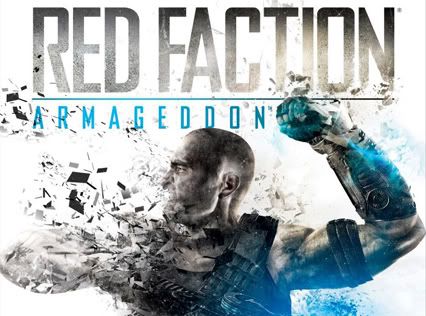
- Format: 360 (version reviewed), PS3, PC
- Unleashed: Out Now
- Publisher: THQ, Syfy Games
- Developer: Volition, Inc.
- Players: 1 (offline), 2-4 (online)
- Site: http://www.redfaction.com/
Red Faction: Armageddon is a dumb, stupid game. Not in the way Gears of War is either. That game is intelligently stupid, wearing its absurd machismo proudly. The problem with Red Faction is the same problem with most games of this kind – it aspires to be something it tragically isn’t. It tries to be smart, when it is indeed quite dumb, so even though you’re having fun, you’re constantly reminded that what you’re playing is woefully generic.
As a follow-up to Red Faction: Guerrilla, Armageddon takes some hard turns away from that entry’s design philosophy. Gone is the open world, the sprawling Martian landscape, and the freedom to make your own approach on an objective. Armageddon is a strictly linear corridor shooter with a tight, over-the-shoulder camera perspective, and alien monsters to mow down in large numbers.
It’s not much of a stretch to say Armageddon has taken several cues from Dead Space. The similarities are uncanny. The strictly dark, dank environments are a huge departure from the dusty red of Mars, and much closer to the claustrophobic Ishimura in Dead Space. The droves of monsters crawl and shamble towards you with the same ridiculous gait of a necromorph, except here they are alien creatures, not mangled corpses. If you’re the type that finds video game monsters silly, rather than scary, Armageddon is going to be comedy hour for you.
The point is that while Armageddon can be very fun at times, it ditches a lot of the previous game’s charm. Instead, it guns for a style that was already derivative when Dead Space did it, but doesn’t offer nearly the same level of polish or intensity. Again, it aspires to be something it tragically isn’t.
The one saving grace, the one hearty bit of gameplay that holds the entire experience together, is the environment destruction. The benefit of the linear design seems to be an even better version of Volition’s Geo-Mod technology. The new tech allows for awesome weapons like the magnet gun, which essentially allows you to toss half a building at a crowd of enemies.
As the game progresses, the environments become more and more complex. At the halfway point you’ll be annihilating multi-tiered structures from the inside out. Often you’ll even destroy your only way out of a room, which is where the other half of the new Geo-Mod tech comes in. Using your repair tool, you can rebuild any structure you destroy. The effect looks really cool and doesn’t get old, even by the end of the game’s 6-8 hour campaign.
What does get old is the uneven level design. While there are moments that focus on cool destruction, there are nearly as many moments where you navigate long corridors with little to work with but your standard guns. The basic combat isn’t bad by any stretch, but it’s not terribly satisfying either. If Armageddon stuck to its strengths, it’d be a lot easier to forgive some of its other flaws.
What holds this awkwardly-paced campaign together is a story that simply takes itself too seriously. You are Darius Mason, a bald-headed everyman with a cleavage-bearing love interest, a gruff “Sarge”-style friend, and some mild daddy issues. The one interesting bit of the story is the arc Darius takes, beginning the game by unintentionally sabotaging his grandfather’s name (Alec Mason from Guerrilla), and then attempting to fix the big mess he’s created. Unfortunately, his bumbling heroism is handled in just about the most predictable manner possible, with the story painting him as a completely just and sympathetic protagonist.
The presentation doesn’t help matters. If there was one page Volition should have stolen from Dead Space’s playbook, it’s the consistent over-the-shoulder view of the action. Armageddon is lousy with cutscene breaks where the action fades to black to show a CG Mason dance around danger for thirty seconds at a time.
Red Faction: Guerrilla had a full 16-player multiplayer mode. Unfortunately not enough people played it. To solve that issue, Volition has gone in a different direction for multiplayer in Armageddon. What you get is a 4-player co-op mode against waves of the game’s various monsters. With the destruction element in full effect, it can actually be a ton of fun.
The problem with the multiplayer, and the problem with the game in general, is that the fun rides so heavily on the destruction element. Thankfully the game doesn’t overstay its welcome, but that’s also a problem. The package you’re getting with Armageddon is anemic compared to the one Guerrilla offered.
Red Faction: Armageddon isn’t a bad game, and if you can turn your brain off for a bit, you may have a ton of fun with it. The problems come when you start to think, because the game isn’t offering much to think about. In a world where we can have our cake and eat it too, with fun experiences, good stories, and novel gameplay, Armageddon just isn’t as worthy of your time as its predecessor, or many other games that have come out this year.
]]>CG: Earth Defense Force: Insect Armageddon is set in Detroit, whereas Earth Defense Force 2017 was set in Japan, what’s the story behind the change in locale?
BE: So, the first three were done by Sandlot in Japan, so they based the game in Japan. This time we brought it over to the States – it’s being developed by Vicious Cycle – so we decided we’re going to do it in America, as a sort of Western EDF. You play as a member of Strike Force Lightning, tasked with defending the city of New Detroit.
(Showing off the game as he speaks, Ethridge approaches one of the series’ iconic ant hill enemy spawn points)

BE: This is a cool mechanic, we wanted to handle the ant hills a little differently this time, to get people to use co-op. Someone has to cover you while you plant an explosive.
(Afterwards a large group of ants approaches, which Ethridge dispatches using a deployable turret)
BE: The turrets in 2017, they were a ton of fun to use, but…
CG: They took up a weapon slot.
BE: Exactly, so we wanted to make a class that’s sort of dedicated to that. They can have those deployables on them all the time. You can have different types of turrets – machine gun turrets, plasma turrets – you can have up to three equipped at any time once you reach level four. You have to earn those upgrades as you level up your character.
CG: So you level up now?
BE: We wanted to give people something to sink their teeth into. They can stick to one character for a long time and get rewarded for it. It’s not a case of getting weapon drops and farming certain levels to get what you want. This time you can purchase weapons and earn XP to upgrade yourself.
Players will advance up to level four, maybe three by the time they’re done with the first campaign playthrough. We wanted to make sure there’s always something more for you to get. To get to level eight on one of your armors is probably going to take you forty to sixty hours depending on how you play.
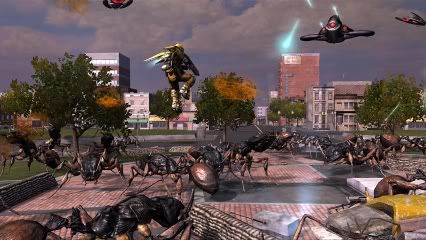
CG: And level eight is the highest?
BE: Yes, and that’s on one armor set. You have four armor sets you can upgrade. We looked at how Call of Duty does the progression stuff – we looked at prestige mode and I don’t know, you go into prestige mode and you’re kind of like, “well, I just lost everything I earned, and what did I get? Another star next to my name?” We wanted to give you something fresh to advance with. So you can level up one armor set fully and then move on to another and it changes up the gameplay.
CG: And what are the different armor types?
BE: Well there’s the tactical armor, he’s our turret-based guy. We also have the battle armor, he’s sort of your big, heavy tank dude. Battle armor is great because he has an energy shield that you can use to block incoming fire or soak up damage from his own explosives.
One of the things about 2017 is that you always blow yourself up when you get the big weapons. Battle armor’s whole thing is that he can always use those weapons. He’s meant to use explosives up close.
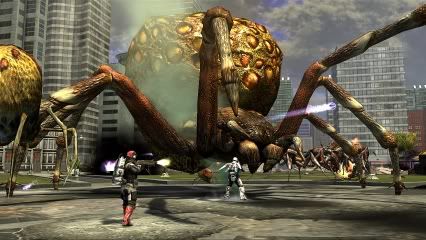
CG: So we just saw you pick up a weapon, what’s the deal with that?
BE: Well, that was an elite enemy weapon drop. When people first started hearing that we had gone exclusively to a weapon buying system, they weren’t happy. We decided to bridge the gap between the two.
CG: Fans liked 2017 as much for its issues as they did for its good things, what was the balance of figuring out what you fix and leave alone?
BE: We knew that people wouldn’t be too upset with updating the graphics as long as it didn’t mean messing with the gameplay. We tried to be very conscious of things like making sure we have enough enemies. However, the big thing this time around is co-op. With co-op, enemies now come at you from all angles. In 2017 you had these situations where you’re sitting there and everything is pouring down the street and you just sit there kind of like Jesse “The Body” Ventura in Predator. We have those moments but we want to make sure that when you’re playing with your buddies everyone has something to shoot at. We tried to improve the AI. I don’t think people will be too upset about that.
At first, we had cut out split-screen mode. People were very upset about that. We really wanted to listen to the fans and make them happy, so we extended our schedule a bit and got split-screen back in.
CG: And what about the dialogue? We heard a bit of it, and it almost seemed…good.
BE: I don’t know if you’d say that if you heard all of it. Knowing we made this in the States and not in Japan, if we tried to imitate them, we wouldn’t be happy with that we came out with. We couldn’t force ourselves to make bad English dialogue, so we took a different approach. We wanted to make it like an over-the-top, super-ridiculous, Michael Bay on steroids action movie. We have these four guys that hang out with you, Cyrus, Kid, Kicker, and Old Man, and they’re always saying things like, “You know man, when I get back home I’m just gonna have a beer.” Stupid things like that have the same vibe as EDF.
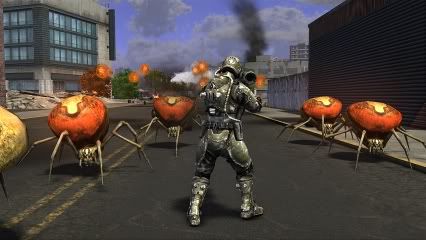
CG: So New Detroit? Isn’t Detroit crappy enough? Did it really need a bug invasion?
BE: Well, I’m not going to say Detroit is crappy, but you will hear the characters say things like, “Now it’s starting to look like old Detroit!”
We had this city we’d made – it was a fictitious city without a name – and as we started to finish it up we thought it looked like Detroit. We didn’t want the game to take place in New York. Everything takes place in New York. So we decided to make this New Detroit. Maybe it’s built on the foundation of old Detroit, maybe it’s somewhere else, but the point is that it’s a different time and place, and it’s a city that’s willing to be blown up.
CG: Is there a release date?
BE: Yeah, Earth Defense Force: Insect Armageddon is coming out July 5, 2011 on Xbox 360 and PS3. It’s also coming out at $39.99, the same price as 2017.
]]>With the release of Rockstar’s L.A. Noire getting closer, it seems it’s time for awkward trailer-voice guy to make his return. Much like the trailers that led up to the release of Red Dead Redemption, this new gameplay trailer plays like a stiff business presentation – though the footage speaks for itself. The trailer shows the basic gameplay loop for the game, which involves Rockstar’s trademark driving, shooting, and story-telling, but with a crime-solving twist. Players will be able to investigate crime scenes, examine clues, and piece together the truth by talking to witnesses. They’ll rise up the ranks from street cop to homicide detective. This, combined with the game’s insane performance capture technology, makes for what looks like another open-world Rockstar game with enough twists to keep things fresh. And those faces!
Check out the trailer and let us know what you think in the comments. Do you find the characters creepy, realistic, or a bit of both? And how about playing the good guy in Rockstar game? The trailer gives us all a lot to digest and makes the wait for the game’s release in May that much harder.
]]>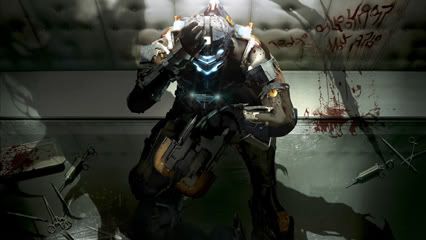
- Format: Xbox 360 (version reviewed), PS3, PC
- Unleashed: Out Now
- Publisher: EA
- Developer: Visceral Games
- Players: 1 (offline), 2-8 (online)
- Site: deadspace.ea.com
With Dead Space 2, you could make a case that there’s something off about the way videogames are evolving. Here we have a game about a guy in a space suit that fights monsters for hours on end, and yet it is one of the most emotional rollercoaster rides the medium has seen. Sure, those emotions are often fear, tension, anger and despair, but they’re still uncharacteristic of an art form that rarely goes beyond simple fun.
Dead Space 2 is often an unpleasant game to play – it’s so relentless with its atmosphere that it’s difficult to play for long stretches of time without taking a break. This isn’t necessarily anything new for the series, as the original Dead Space was often just as tense; but the sequel makes so many clever tweaks that its formula for tension is much more potent.
The most substantial change is in the pacing. Dead Space 2 is much more dynamic than its predecessor, with as much creepy downtime as intense action. The developers show restraint in all the right places, with sections where nothing happens that are almost more terrifying than the rooms full of enemies. Countering the moments of quiet suspense are some fantastic action scenes that provide some unhinged action hero bravado courtesy of protagonist Isaac Clarke.
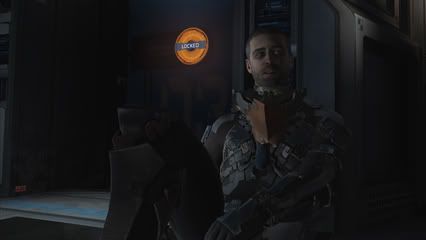 Speaking of our hero, Isaac has gone from a silent vessel for your own adventure to a talkative, three-dimensional character. Developer Visceral has done some amazing work keeping Isaac simple and down-to-earth while telling a much more personal tale. There are moments where he’ll say so much with nothing but a simple desperate exhale or some strained dialogue. Isaac has been through hell, and there are few games that have made a hero more convincing.
Speaking of our hero, Isaac has gone from a silent vessel for your own adventure to a talkative, three-dimensional character. Developer Visceral has done some amazing work keeping Isaac simple and down-to-earth while telling a much more personal tale. There are moments where he’ll say so much with nothing but a simple desperate exhale or some strained dialogue. Isaac has been through hell, and there are few games that have made a hero more convincing.
You’ll go through that hell with him, and it will be more hellish if you dare to tackle the game’s higher difficulties. Dead Space 2 handles its difficulty options less strictly than the first game, allowing players to change difficulty mid-game if they want. Because of that, we suggest bumping up the difficulty as high as you can handle. Even at the highest difficulty level, the game isn’t overly punishing – rather, it almost perfectly leaves you in a constant state of despair, with less than a clip in each gun and a single med kit to keep you going.
Much like the first game, in the right conditions – namely, surround sound at night – Dead Space 2 is a transcendental experience. There’s so much care put into each atmosphere-drenched environment, and the soundscape is so rich and dynamic that playing the game starts to feel like submitting yourself to sensory torture. Once again Visceral proves they are the masters of the audio mix with violent, bold range that makes the combat booming and powerful.
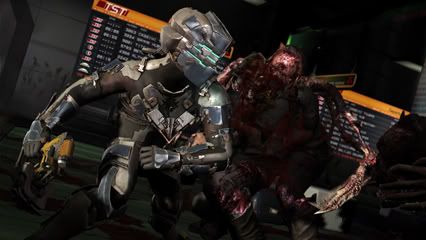 Pulling all of these elements together, the game is an exhausting journey that pushes the boundaries of the typical, triple-A, mainstream videogame. There’s no doubt the production values are through the roof, or that the game is ridiculously polished, but it’s also willing to throw encounters at you that intentionally push you to your limits. The final chapter of the game is a masterstroke of ammo scarcity and enemy tenacity that’s sure to leave you frazzled.
Pulling all of these elements together, the game is an exhausting journey that pushes the boundaries of the typical, triple-A, mainstream videogame. There’s no doubt the production values are through the roof, or that the game is ridiculously polished, but it’s also willing to throw encounters at you that intentionally push you to your limits. The final chapter of the game is a masterstroke of ammo scarcity and enemy tenacity that’s sure to leave you frazzled.
There’s very little to complain about with Dead Space 2, especially by the end when you look back at the journey as a whole. We can think of few games that take you on such an incredible rollercoaster ride – only Half-Life 2 comes to mind, and that’s some great company to be in. Yes, there’s a weak area here and there, and the storytelling can be a bit uneven at times, leaving much of the real plot for the end; and we kind of wish some of the dialogue was easier to understand without subtitles on, but these are niggles at the end of the day.
What puts Dead Space 2 over the edge is that its shoe-horned, afterthought multiplayer isn’t an afterthought at all. Sure, it’s not too different from versus mode in Left 4 Dead, and the handful of maps means it might only entertain for a couple of weeks – but it’s also incredibly polished and fun. Unlike Bioshock 2, which felt too much like it was betraying itself with its multiplayer mode, Dead Space 2’s multiplayer couldn’t be more faithful to the main game.
 The multiplayer pits four humans against four Necromorphs. The humans must complete objectives while the Necromorphs impede their progress. If you enjoy the combat in Dead Space, you’ll be right at home here because it’s identical. There’s almost nothing you do in the single player combat that you can’t do in multiplayer, so you can stomp away to your heart’s content. Necromorphs are the unique ones, with fun abilities like crawling on walls and ceilings or performing violent executions.
The multiplayer pits four humans against four Necromorphs. The humans must complete objectives while the Necromorphs impede their progress. If you enjoy the combat in Dead Space, you’ll be right at home here because it’s identical. There’s almost nothing you do in the single player combat that you can’t do in multiplayer, so you can stomp away to your heart’s content. Necromorphs are the unique ones, with fun abilities like crawling on walls and ceilings or performing violent executions.
From the powerful ups and downs of the single-player, to the consistent fun of the multiplayer, Dead Space 2 starts off 2011 with an unforgettable journey that’s sure to be remembered when game of the year discussions roll around in this crowded year. It pushes the medium forward in unexpected ways, transcending fun and becoming the kind of challenging entertainment that makes it more than just playing a game.
]]>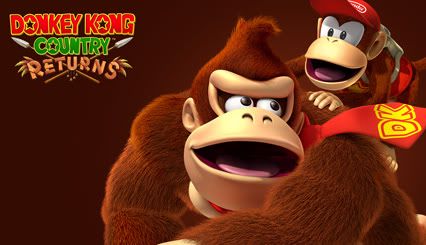
- Format: Wii
- Unleashed: Out Now
- Publisher: Nintendo
- Developer: Retro Studios
- Players: 1-2
- Site: donkeykong.nintendo.com/
Never has a Wii game demanded a simple post-release patch quite like Donkey Kong Country Returns. It’s quite impressive actually – one tiny flaw turns an otherwise joyfully creative game into a bit of a chore. The culprit? Motion controls.
DKC Returns controls, for the most part, how you’d expect a 2D nostalgia trip to control. The d-pad moves Kong, there’s a button for jumping, and another for grabbing barrels and running. Simple enough – but that’s only half of the game’s controls. The rest are combinations of d-pad directions while shaking the Wii remote.
Shaking alone makes Donkey Kong slap and shake the ground, revealing hidden areas and items. Ducking and shaking makes him blow wind, also used in accessing secrets. But the biggest culprit is the series’ iconic roll move, done by shaking the Wii remote while running.
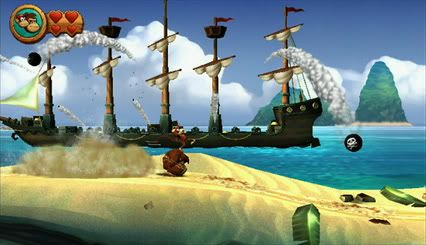 None of these moves are required to finish the game (except in a few, non-annoying spots), but you’d miss out on most of the secrets – and the roll makes an otherwise lumbering Donkey Kong incredible agile. Even when you get the hang of it, it’s an unpleasant motion that can get really tiring if you’re taking advantage of it. That, and it’s unreliable – sometimes you won’t get the shake just right and you’ll walk off of a ledge instead.
None of these moves are required to finish the game (except in a few, non-annoying spots), but you’d miss out on most of the secrets – and the roll makes an otherwise lumbering Donkey Kong incredible agile. Even when you get the hang of it, it’s an unpleasant motion that can get really tiring if you’re taking advantage of it. That, and it’s unreliable – sometimes you won’t get the shake just right and you’ll walk off of a ledge instead.
We’re harping on it because from the very beginning of the game, straight through to the final boss, the shaking controls were a constant nagging issue. If they’d just offered a control scheme that let you play without it, the game would be damn near perfect.
And that’s the rub, it’s a single bad design decision (albeit a prevalent one), in a game that otherwise offers pixel-precise controls, beautiful levels gushing with creativity, and a welcome challenge.
DKC Returns is a nearly perfect nostalgia trip – it nails the formula of the SNES games for the most part, but still manages to have its own identity. There are new gameplay twists at every corner, and vibrant level design that often had us grinning ear-to-ear.
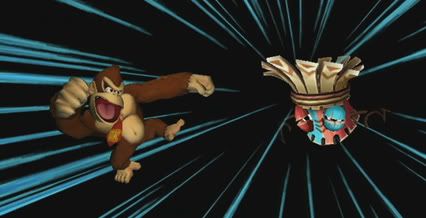 It’s also hard – like, “I lost 20 lives at that last checkpoint” hard. But thanks to extremely precise controls (as long as you’re not rolling) and level design that pushes you to react without forcing rote memorisation, the challenge is rarely frustrating.
It’s also hard – like, “I lost 20 lives at that last checkpoint” hard. But thanks to extremely precise controls (as long as you’re not rolling) and level design that pushes you to react without forcing rote memorisation, the challenge is rarely frustrating.
Even if the game gets the best of you, it’s willing to make concessions in the name of fun. Items in Cranky Kong’s shop can be used to make Donkey Kong nearly invincible, and Nintendo’s Super Guide (introduced in New Super Mario Bros. Wii) returns to give you a free pass on any levels that defeat you.
The upside to all this challenge is the satisfaction it brings. Donkey Kong Country is one of the best arguments for challenge in modern gaming this side of Super Meat Boy. There’s a thrill to nailing a long string of strictly timed platforming bits and coming out on the other side unscathed. Even if you fail a few times, the distance between checkpoints will push you to master the tough spots, making you all the more skilled for the challenges ahead.
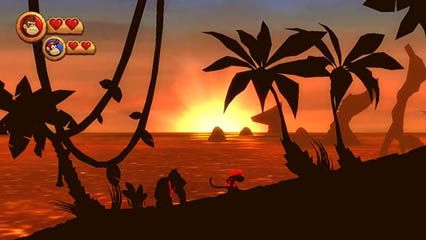 Some people will scoff at the slightest frustrations, calling DKC Returns a game built on memorisation rather than skill, but they’d be wrong. The game rewards skillful platforming and punishes those that don’t stay on their toes, but it’s never forcing you to memorise long sections. Even levels where you’re barrelling along on a mine cart or rocket, the game gives you ample opportunity to react. It’s clear that developer Retro’s intent was to walk the line between exhilarating challenge and frustration, and on nearly every level they succeed brilliantly.
Some people will scoff at the slightest frustrations, calling DKC Returns a game built on memorisation rather than skill, but they’d be wrong. The game rewards skillful platforming and punishes those that don’t stay on their toes, but it’s never forcing you to memorise long sections. Even levels where you’re barrelling along on a mine cart or rocket, the game gives you ample opportunity to react. It’s clear that developer Retro’s intent was to walk the line between exhilarating challenge and frustration, and on nearly every level they succeed brilliantly.
There’s a good amount of meat to this game to boot. Those that aim for 100% completion won’t be disappointed with the wealth of secrets to be had. While platformers get a lot of heat for mindless collecting, DKC succeeds by putting most of the vital collectibles in clever hiding places. The only problem is that the more time you spend searching for secrets, the more you have to deal with the frustrating controller shaking motions. Many of the secrets are revealed by pounding the ground, blowing out torches, spinning fans, and occasionally using the roll move to extend the length of your jumps.
Still, getting past the annoyance, there’s so much vibrant level design in Donkey Kong Country Returns. Whether you’re running through a sunset casting a silhouette of Kong and Diddy in the foreground, plowing through walls atop a rhino, or blasting from barrel to barrel like a cannon ball, there’s a kinetic energy to the game that’s hard to deny. There are surprises at every turn, such as one level where some innocent looking eggs explode into a torrent of baby spiders that you must outrun.
With this revival, Retro Studios has breathed new life into a classic SNES series, and crafted one of the best platformers on the Wii. Assuming you’re up for the challenge, it’s a damn near perfect game. That said, the motion controls are such a huge thorn in the game’s side that it never truly reaches the greatness it should. Donkey Kong Country Returns, as fantastic a game as it often is, is also a lesson in how carefully developers must integrate motion controls as they become a bigger part of the game design vocabulary.
]]>
- Format: XBLA (version reviewed), PSN, WiiWare
- Unleashed: Out Now
- Publisher: Hudson Soft
- Developer: Pi Studios
- Players: 1-4 (offline), 1-8 (online)
- Site: http://www.hudsonent.com/battlefest/
Even the most devoted of Bomberman fans are going to find Bomberman Live: Battlefest a bit hard to swallow. A sequel of sorts to 2007’s Bomberman Live, Battlefest comes off more like a patch that’s been kept in a dusty basement for a few years. The updates are marginal at best; resulting in a game that’s still fun, but very hard to recommend to anyone who bought the original.
Putting the two games side-by-side, visually they’re almost identical. A handful of new costumes, Xbox avatar support, and several new stages are a plus, but a lot of what’s new comes with a catch. The new stages add a lot of variety, but many of them are too visually busy or use poor colour palettes. With the same dated graphics engine in use, you spend as much time contending with muddy graphics as you do your enemies.
 The visuals are made worse by the odd, isometric angle the more recent Bomberman games seem to insist on. This wasn’t as bad in the original Bomberman Live, because you could change the view to a more direct overhead angle, but this feature was strangely omitted from Battlefest. Because of this, you’ll often have a hard time approximating your character’s position, and the extra time you spend thinking about that is a death sentence when the game gets hectic.
The visuals are made worse by the odd, isometric angle the more recent Bomberman games seem to insist on. This wasn’t as bad in the original Bomberman Live, because you could change the view to a more direct overhead angle, but this feature was strangely omitted from Battlefest. Because of this, you’ll often have a hard time approximating your character’s position, and the extra time you spend thinking about that is a death sentence when the game gets hectic.
Other additions include a handful of new weapons and modes, but they come with some catches that diffuse their novelty. The selection of new weapons is hit and miss with some, like the Laser Bomb, feeling more like a power-down than a power-up. The bomb won’t detonate unless someone crosses in front of it, and if you grab it early in a match, the only person to step in front of it is yourself. The Cluster Bomb, on the other hand, is a great new power weapon that explodes and launches three more bombs outward. Those sick of the over-powered Dangerous Bomb from Bomberman Live may want to opt for this one in their custom matches.
 While the weapon selection does feel a bit better than it did in Bomberman Live, it’s too much. Players will want to remove a few weapons in their matches, otherwise it gets too busy and hectic. That’s actually one of the problems with the game in general – players become insanely powerful, and a lot of the strategy of classic Bomberman is lost in all the chaos.
While the weapon selection does feel a bit better than it did in Bomberman Live, it’s too much. Players will want to remove a few weapons in their matches, otherwise it gets too busy and hectic. That’s actually one of the problems with the game in general – players become insanely powerful, and a lot of the strategy of classic Bomberman is lost in all the chaos.
New modes don’t really do it any favours, as they focus too much on objectives and infinite respawns. Battlefest basically shoe-horned classic first-person shooter game modes into a Bomberman setting. Capture the flag, kill the man with the ball, VIP, and even a take on Counter-Strike are all accounted for, and all feel out of place in this style of game.
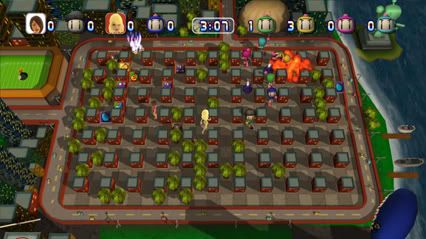 Bomberman Live: Battlefest isn’t an improvement on Bomberman Live – if anything, it’s slightly worse. In our tests we had better, less laggy matches in the original game now than with Battlefest. Every new feature comes with a new catch, making for a game that’s better in some areas and worse in others.
Bomberman Live: Battlefest isn’t an improvement on Bomberman Live – if anything, it’s slightly worse. In our tests we had better, less laggy matches in the original game now than with Battlefest. Every new feature comes with a new catch, making for a game that’s better in some areas and worse in others.
Three years is a long time to come back to a series with so little to show for it, and it’s hard to think of this as anything but a cash-in because of it. It’s odd too because we’d probably be all too happy to let Hudson have their cash-in if they’d just give us a re-release of Saturn Bomberman.
]]>
- Format: XBLA (version reviewed), PSN
- Unleashed: Out Now
- Publisher: Sega
- Developer: Sega
- Players: 1
- Site: www.xbox.com
With Sega’s latest scheme to re-release Dreamcast classics on XBLA and PSN, they seem intent on shooting themselves in the foot. Sonic Adventure’s release proved once and for all that it wasn’t ever a good game to begin with, and a bare-bones emulation job didn’t do it any favours. Their next target in rose-tinted memory destruction: Crazy Taxi. But despite their best efforts to undermine a classic arcade driving game, it manages to shine just a bit beneath all the dust and cobwebs.
This new version adds nothing new, and in fact Sega went out of their way to ruin some of the things that made the game so enjoyable. The 90s-era thrash-punk soundtrack is gone, replaced by a mish-mash of modern unknowns. It’s a music selection so uninspiring that it detracts from the fun.
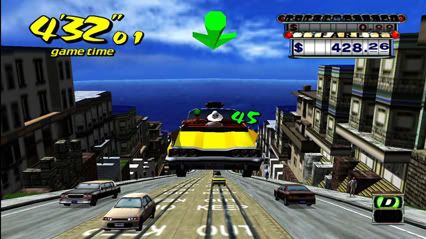 Also gone are the real world destinations like Pizza Hut and KFC. It’s not the biggest loss, but if Sega had to go in and tinker with the game to remove those things, they could have also spruced up the graphics a bit while they were there. The visuals are still generally sharp, as the original Dreamcast game ran at 60 fps and had some higher resolution settings. However the blurry, garish texture work, absurd pop-in, and bizarre graphical glitches are still present. Sometimes cars simply disappear right before your eyes, or a huge sky-scraper appears out of nowhere.
Also gone are the real world destinations like Pizza Hut and KFC. It’s not the biggest loss, but if Sega had to go in and tinker with the game to remove those things, they could have also spruced up the graphics a bit while they were there. The visuals are still generally sharp, as the original Dreamcast game ran at 60 fps and had some higher resolution settings. However the blurry, garish texture work, absurd pop-in, and bizarre graphical glitches are still present. Sometimes cars simply disappear right before your eyes, or a huge sky-scraper appears out of nowhere.
What happened to the Sega that put out that great, updated conversion of Virtual On: Oratorio Tangram? That was a great game to begin with, but with updated graphics and online play it became easily recommendable to newcomers. Crazy Taxi, conversely, is almost impossible to recommend to anyone but those with very fond memories of the original.
That’s a shame because if you learn the basics, it’s actually a brilliantly fun game. But even the fundamentals of boosting and drifting are made unclear by a help section that’s short and lazy. In fact, just about everything you expect out of an XBLA/PSN update is done poorly. Menus are the same loud and ugly ones from the Dreamcast version, and even the achievements are completely messed up. They don’t stack, so if you get an S-class license your first try, you’ll have to go back and purposefully do worse in order to unlock the rest of the achievements.
 It’s a testament to the original game that despite such a hack-job on the part of Sega, we still managed to have a ton of fun with the game. Crazy Taxi has aged surprisingly well, and it’s because there really isn’t anything like it. Yeah you have your open-world driving games and crazy arcade racers, but Burnout Paradise is probably the only other game to successfully combine the two. It’s a manic experience – intentionally sloppy – with a boost-heavy, power-sliding driving model that’s comically satisfying. In presentation (despite the terrible graphics) it hits all the right notes, giving players that aesthetic reward that only the best arcade games provide.
It’s a testament to the original game that despite such a hack-job on the part of Sega, we still managed to have a ton of fun with the game. Crazy Taxi has aged surprisingly well, and it’s because there really isn’t anything like it. Yeah you have your open-world driving games and crazy arcade racers, but Burnout Paradise is probably the only other game to successfully combine the two. It’s a manic experience – intentionally sloppy – with a boost-heavy, power-sliding driving model that’s comically satisfying. In presentation (despite the terrible graphics) it hits all the right notes, giving players that aesthetic reward that only the best arcade games provide.
That said, we don’t think you should buy this version of the game unless you’re a die-hard fan who’s lost their Dreamcast copy. This is a functional port, but with re-releases like Bionic Commando and Rez available, Sega’s efforts come off like a bad joke. It shows a complete lack of respect, not just for the game, but for the fans who’ve begged for it.


- Format: XBLA (version reviewed), PSN
- Unleashed: Out Now
- Publisher: THQ
- Developer: Double Fine
- Players: 1
- Site: http://www.costumequestgame.com/
Costume Quest is a tribute to Halloween first and a game second. It’s an utterly adorable story of children trick-or-treating their way to victory against an evil witch and her band of goblins. But it’s also undeniably simple; it walks a fine line between elegant and boring.
The game begins with a brother and sister about to go out for Halloween. After choosing which of the siblings you’ll play as, you take off into the neighborhood where your sibling is mistaken for a giant piece of candy and kidnapped by goblins. From there you have to trick-or-treat the neighborhood, defeating any monsters you encounter and collecting as much candy as you can.
The style of the adventure is one of the strongest elements. The kids themselves waddle around in their costumes, clanking their candy pails around through an environment that’s so evocative of autumn weather that you can almost smell it. When battles start, the various costumes come to life, realized as the badass 50-foot tall heroes the children imagine them as – it’s awesome.
From the start, most players will no doubt be a bit put off by the game’s lack of voiced dialogue. While the writing is uniformly excellent, the little beep that plays with each new dialogue bubble isn’t enough. Even some stylized mumbo jumbo would’ve been nice but the writing is endearing, and the bubbles are comedically timed, so you do get used to it.
Costume Quest is, at heart, steeped in JRPG-esque mechanics. You explore a town, mall, and carnival raiding the environment for candy, talking to strange townfolk, and initiating battles with goblins. There’s a shop where you trade candy for stamps, providing combat buffs to your party members. And much like modern JRPGs, Costume Quest tinkers with the concept of random battles, making trick-or-treating door-to-door a gamble that can result in candy or a battle. Further into the game enemies will patrol around the environments, giving you an opportunity to sneak up behind them for a battle advantage.
The battles themselves couldn’t be more simple. You trade shots with the enemies in turn-based combat, with simple QTEs (ala the Mario & Luigi RPGs) deciding whether you hit harder or defend better. For the first two-thirds of the game there’s enough enemy variety and new elements introduced that the combat is never boring. This is when Costume Quest is at its best – the story is fun, the combat is just engaging enough, and the questing and exploration keeps things moving along.
But as this decidedly short quest (5-6 hours or so) wears on, the combat starts to drag. You’ll eventually figure out a tactic that works, and the game never really challenges that. Especially towards the end when enemy groups are pretty much all the same, and there’s no reason to use all the great costumes you unlock.
Costume Quest begins on the right foot, and for the vast majority of the time it’s a total joy to play. In the last hour or two the gameplay loses steam, but the story and charm never let up for a second. If the combat wasn’t such a chore later on, it’d be a perfect little game. As it is, we wouldn’t mind seeing an even better one next Halloween.
]]>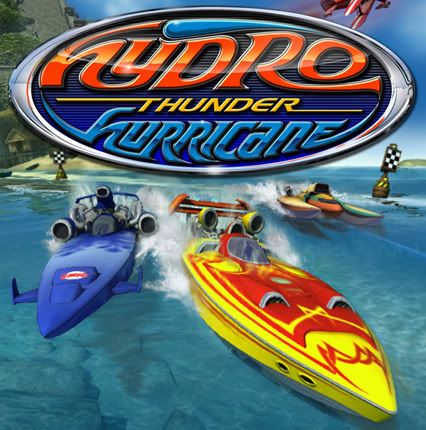
- Format: XBLA
- Unleashed: Out Now
- Publisher: Microsoft Game Studios
- Developer: Vector Unit
- Players: 1-4 (offline), 2-8 (online)
- Site: http://www.xbox.com/
Hydro Thunder Hurricane wasn’t quite the retro revival fans had hoped for, and the Tempest Pack DLC doesn’t mess with the formula. This set of three new tracks and two new boats isn’t going to change anyone’s mind but taken on its own merits, it offers some of the biggest thrills in the game.
The pack includes new events for the new tracks in singleplayer, including standard races, ring master challenges, gauntlets, and championships. Along with those events there’s two brand new boats, and expert class versions of the novice and intermediate class boats. These must be unlocked, requiring a staggering 200,000 point milestone in order to get them all.
Thankfully, if singleplayer isn’t your thing, these new tracks can be tackled online and points can be earned towards new boats there. Vector Unit cleverly included the tracks in a free update for multiplayer, so there’s no worries of splintering the online population.
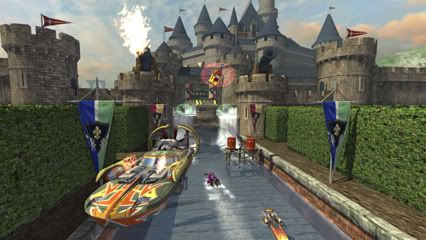 The first of the three new tracks takes place in the lost city of Atlantis. It features three quick laps filled with dynamic elements. There’s a good flow to the track and the ever-changing shortcuts are fun to nail, but ultimately it’s probably the weakest of the three. There just isn’t much separating it from the game’s original selection of maps.
The first of the three new tracks takes place in the lost city of Atlantis. It features three quick laps filled with dynamic elements. There’s a good flow to the track and the ever-changing shortcuts are fun to nail, but ultimately it’s probably the weakest of the three. There just isn’t much separating it from the game’s original selection of maps.
Castle Von Boom, the second track, is much more interesting. Here the arcade-y gimmicks are in full swing, and the bombastic nature of this track makes it one of the most faithful to the original Hydro Thunder. You’re essentially racing three laps through a repeating figure-8 with shortcuts, as well as jumps and exploding barrels in your way. But if that wasn’t enough, the track also loops back on itself, forcing racers to drive back through the same course again, and straight at the boats racing in the other direction. The resulting madness has you ducking and weaving between rival boats, exploding barrels, and player-activated cannon balls.
The last of the three tracks is also the best. Bermuda Triangle takes you to that infamous danger zone, envisioning it as a swirling vortex that teleports you into an abstract world of floating islands. The action is insane, with the opening third of the race sending you barreling toward the aforementioned Triangle, over waves, and around a spiraling oil rig. From there you’re launched into the vortex where you bound from one suspended lake to the next until you come out the other side. Upon return to reality, two giant ships fall from the sky and you ride the resulting waves to victory.
The content of the Tempest Pack is relatively excellent – you just have to consider how much you enjoy Hydro Thunder Hurricane to begin with. The problems still persist – issues like overly punitive physics, poor framerate, and ugly graphics still sour the experience even here. Play online and you’re met with the same annoying variable boost that makes racing at the front of the pack an unrewarding chore. The game is still what it is, but if you don’t mind it, the Tempest Pack is a must-have.
]]>